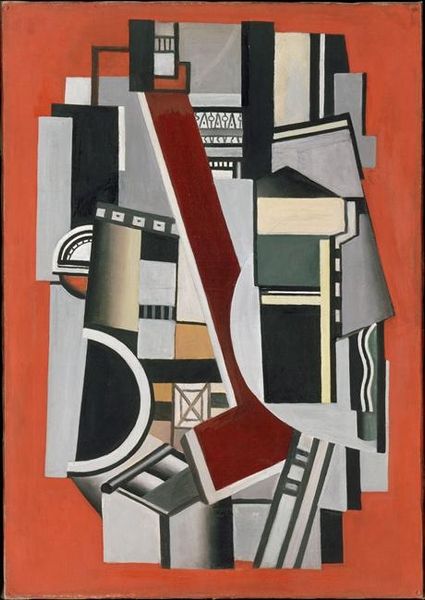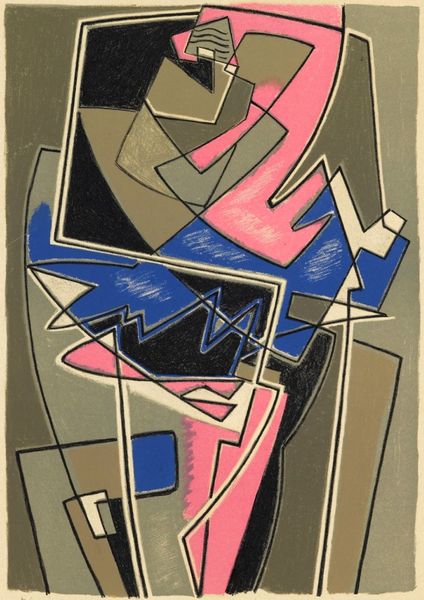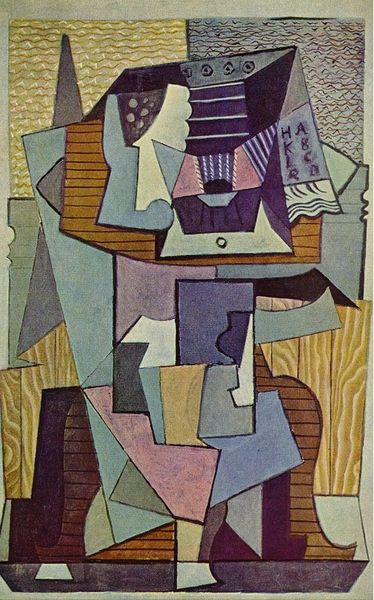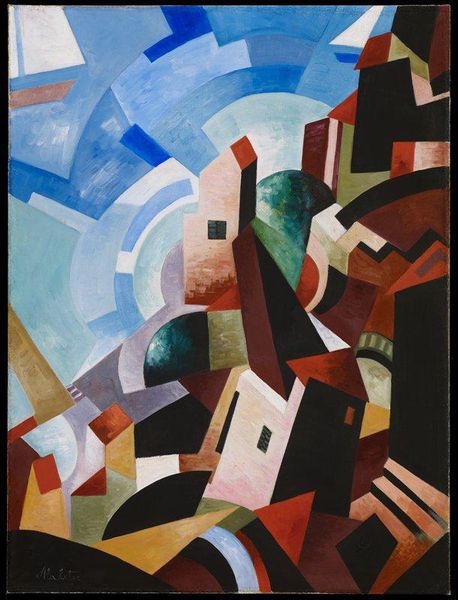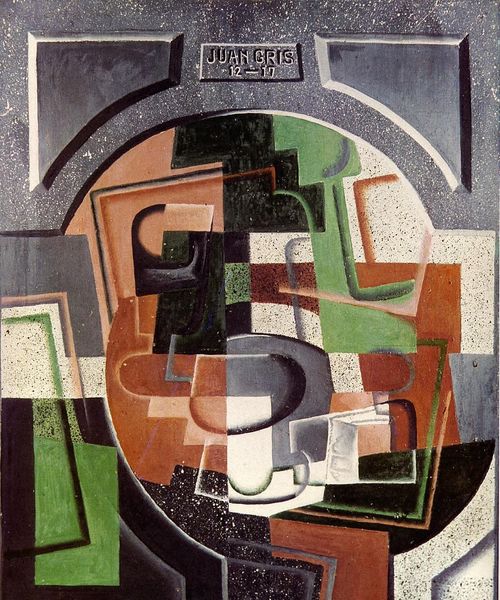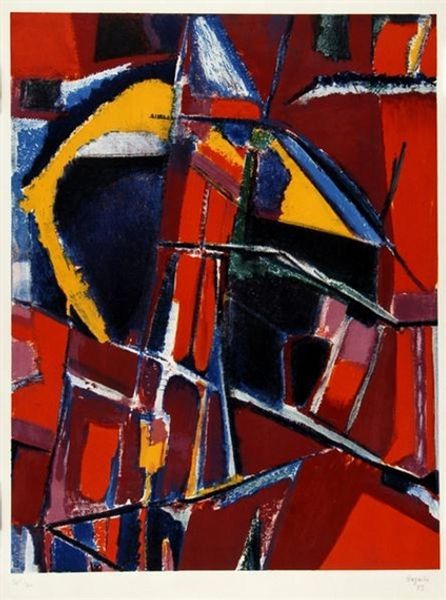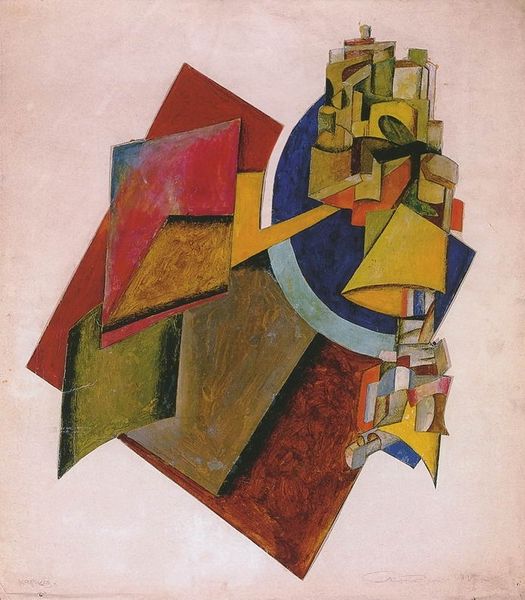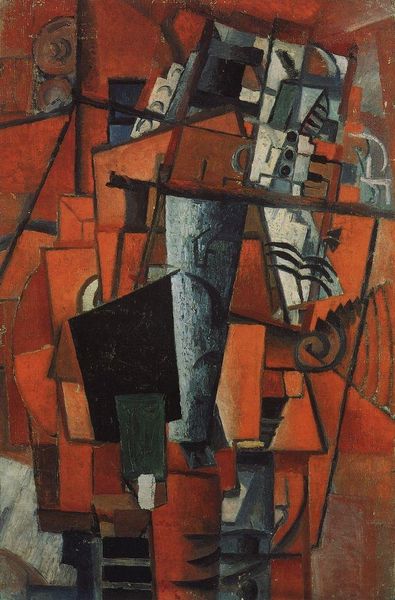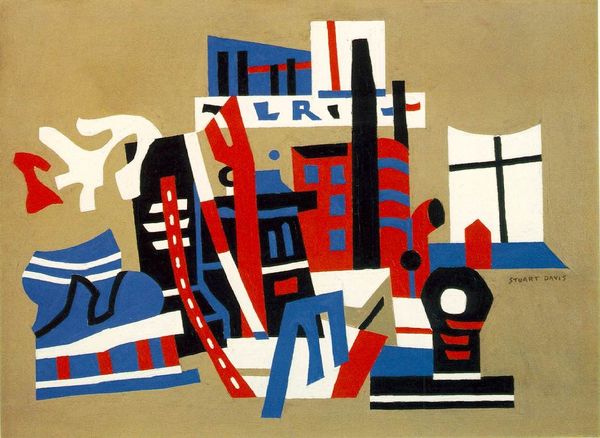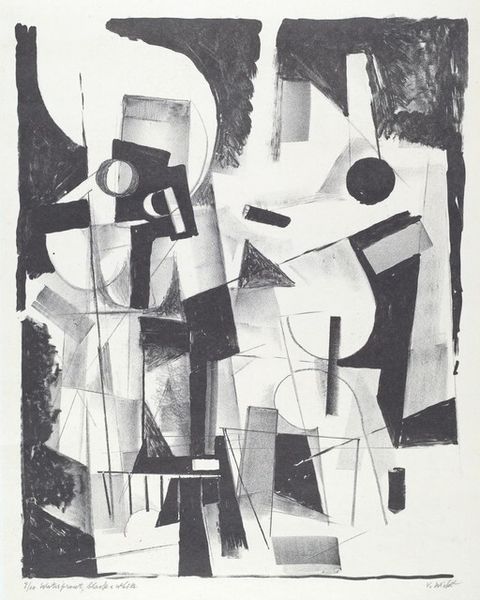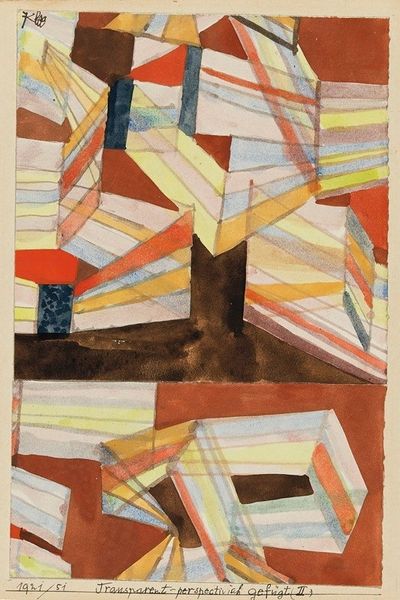
#
graffiti
#
graffiti art
#
street art
#
graffiti design
#
painted
#
mural art
#
street graffiti
#
spray can art
#
urban art
#
paint stroke
Copyright: Tamara de Lempicka Estate LLC
Curator: This is Tamara de Lempicka's "Abstract Composition in Red and Blue I," completed in 1953. What do you make of this departure from her Art Deco portraits? Editor: My initial reaction is organized chaos. The colours are stark against the blue backdrop, and the forms... they’re fighting for space, a sort of urban rebellion contained within a frame. Curator: Note the recurrence of geometrical components in reds and whites; Lempicka deconstructs form here, nearly rendering her compositions illegible, it is an analytical cubist move of sorts. Editor: Right, she is using hard lines to deconstruct shapes and yet the heavy reds are fighting that clean detachment and calling my attention back to a raw emotionality. Is it trying to say something about the post-war climate? Curator: It's plausible, the chromatic intensity does bring to mind the bold colours favored in postwar design—however, note how the lines intersect and interact: they don’t blend, they define. One can’t but see that as a semiotic declaration about object relations. Editor: Possibly, yet art always exists in conversation with its socio-political surroundings. As an emigrant who lived through two world wars, what are the ways her biography affected this break with representationalism, particularly when so many of her other artworks captured elite subjects? Curator: Biography can offer a window into intent, but it needn’t fully contain or restrict our view. Regardless of the subject or biography, her careful control over line and colour remains a compelling aspect of her art and demonstrates the pure opticality of the image. Editor: I see what you mean, it all adds up to a deeply interesting point of aesthetic departure that also subtly engages in societal reflection for someone often labeled as simply a portrait artist of glamourous patrons. Curator: Yes, it pushes against simplistic understandings, as it invites us to delve into its intricate structural dialogue. Editor: Indeed, seeing this piece, and seeing beyond surface appearance to probe and expose how context is expressed, expands our perception on de Lempicka.
Comments
No comments
Be the first to comment and join the conversation on the ultimate creative platform.
